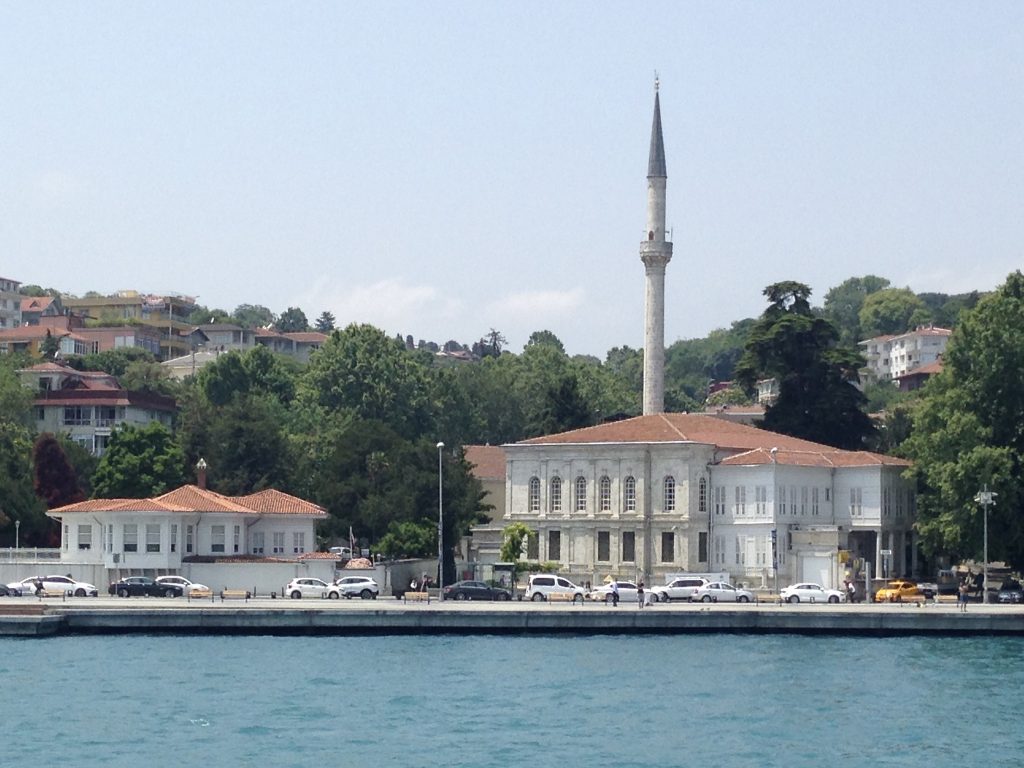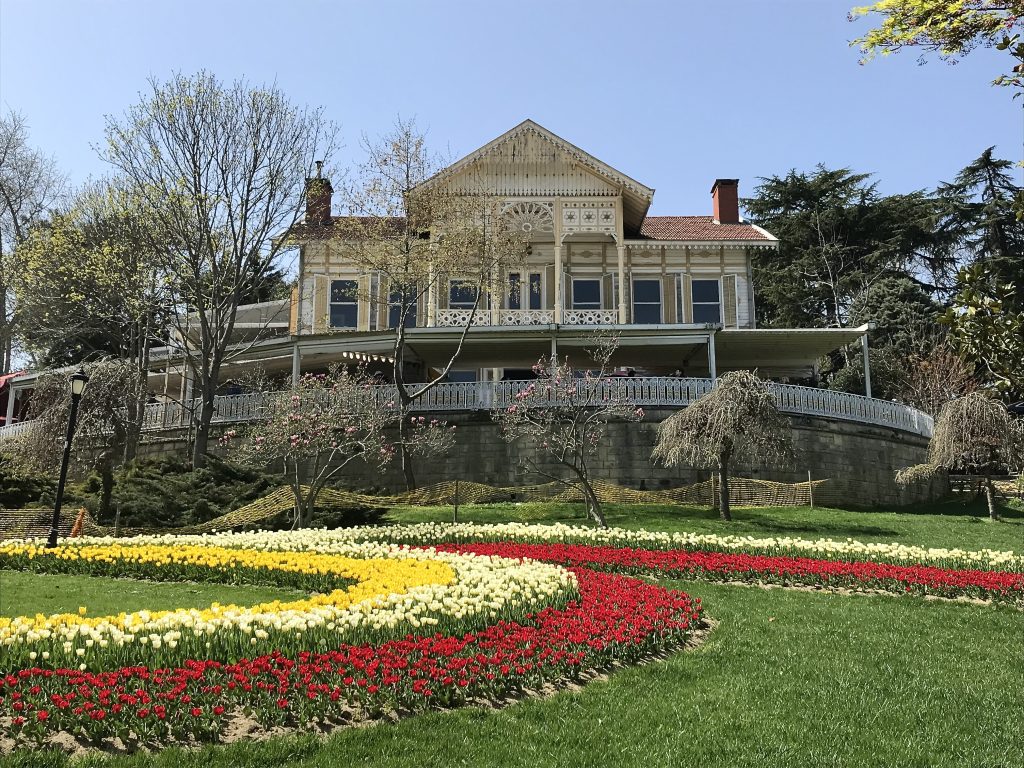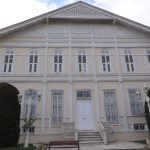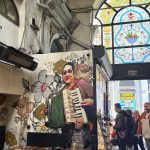Few visitors to İstanbul venture further along the Bosphorus than Rumeli Hisarı which is a shame since the suburb of Emirgan is particularly pleasant and boasts, in the Sakıp Sabancı Museum, one of Turkey’s finest private museums, home to a frequently changing programme of fine exhibitions. Here, too, is the Emirgan Korusu (Emirgan Woods), a large park which is at its glorious best (and busiest) in spring.
This is one of those suburbs to which İstanbullus repair in their thousands to sit at outdoor cafes over light lunches and afternoon teas with a view.
Sakıp Sabancı Museum
Looking out over the Bosphorus from a beautifully landscaped hillside and with a prominent statue of a white horse on the lawn, the Sakıp Sabancı Museum (closed Mondays, TL170) is worth visiting as much for its location as for its contents, which include a fine collection of Turkish calligraphy and many 19th and 20th-century paintings, including works by Italian-born Ottoman court painter, Fausto Zonaro (1854-1929), and Turkish Orientalist artist, Osman Hamdi Bey (1842-1910).
Three of the ground-floor rooms retain the 18th and 19th-century furnishings that were in use when this was a Sabancı family home from 1951 to 1998. They also contain works by the Russian artist Ivan Konstantinovic Ayvazovski (1817-1900) who was responsible for many of the naval paintings adorning the ceilings of the BeylerbeyiPalace.
Other artists represented include İbrahim Çallı (1882-1960), Şevket Dağ (1875-1944), Feyhaman Duran (1886-1970), Bedri Rahmi Eyüboğlu (1911-75), Hamit Görele (1903-80), Hüseyin Ali Lifij (1836-1927), Fikret Mualla (1903-67), Şeker Ahmed Paşa (1841-907), Hoca Ali Riza (1864-1930), Süleyman Seyyid (1842-1913), and İzzet Ziya (1880-1934).
The grounds contain an assortment of marble fountains and other masonry, some of it dating back to Roman and Byzantine times. But the most interesting statues are the two horses, the first by the main gates, the second immediately in front of the house. The horse by the gates is a copy of one of those that formed part of a sculpture of a quadriga (four-horse chariot) in the Hippodrome. The original was stolen by the Fourth Crusaders in 1204 and taken to Venice where it now adorns St Mark’s Cathedral. The second was one of a group of sculptures commissioned by Sultan Abdülaziz after his trip to Europe in 1867.
Around Emirgan
Coming into Emirgan you will see on the inland side of the road the 18th-century Şerifler Yalı, the oldest surviving yalı (waterside mansion) on the European shore of İstanbul. It takes its name from one of its owners, Hüseyin (1776-1849), who was a Şerif (ruler) of Mecca and served in the Ottoman parliament. It now belongs to the environmental group ÇEKÜL.
Next to the yalı is the simple but elegant Hamid Evvel Cami, dating back to 1838 although built on the site of a much older mosque. Facing it across Emirgan Meydanı, the main square, is the Muvakkithane, or timekeeper’s lodge, which was paid for by Ağa Hüseyin Paşa. Today it houses a cafe.
The square itself is a great place to while away the odd hour or so in the shade of its ancient plane trees. The fine octagonal fountain in the centre dates back to 1783.
Emirgan Korusu, the wooded park behind the Sakıp Sabancı Museum, is a popular place to go to admire first the tulips and then the flowering Judas trees of İstanbul in spring. Set, like Yıldız Park, on a hillside, it commands wonderful views as well as offering a choice of cafes in its historic, colour-coded köşks (pavilions), all of them run by the state-owned company Beltur which means no alcohol but prices roughly half what you would pay elsewhere.
Transport info
Most buses heading up the Bosphorus from Kabataş and Beşiktaş pass through Emirgan after Bebek and Rumeli Hisarı. The narrow coast road means that the journey can take longer than you might hope at busy times of days.
Nearby areas


